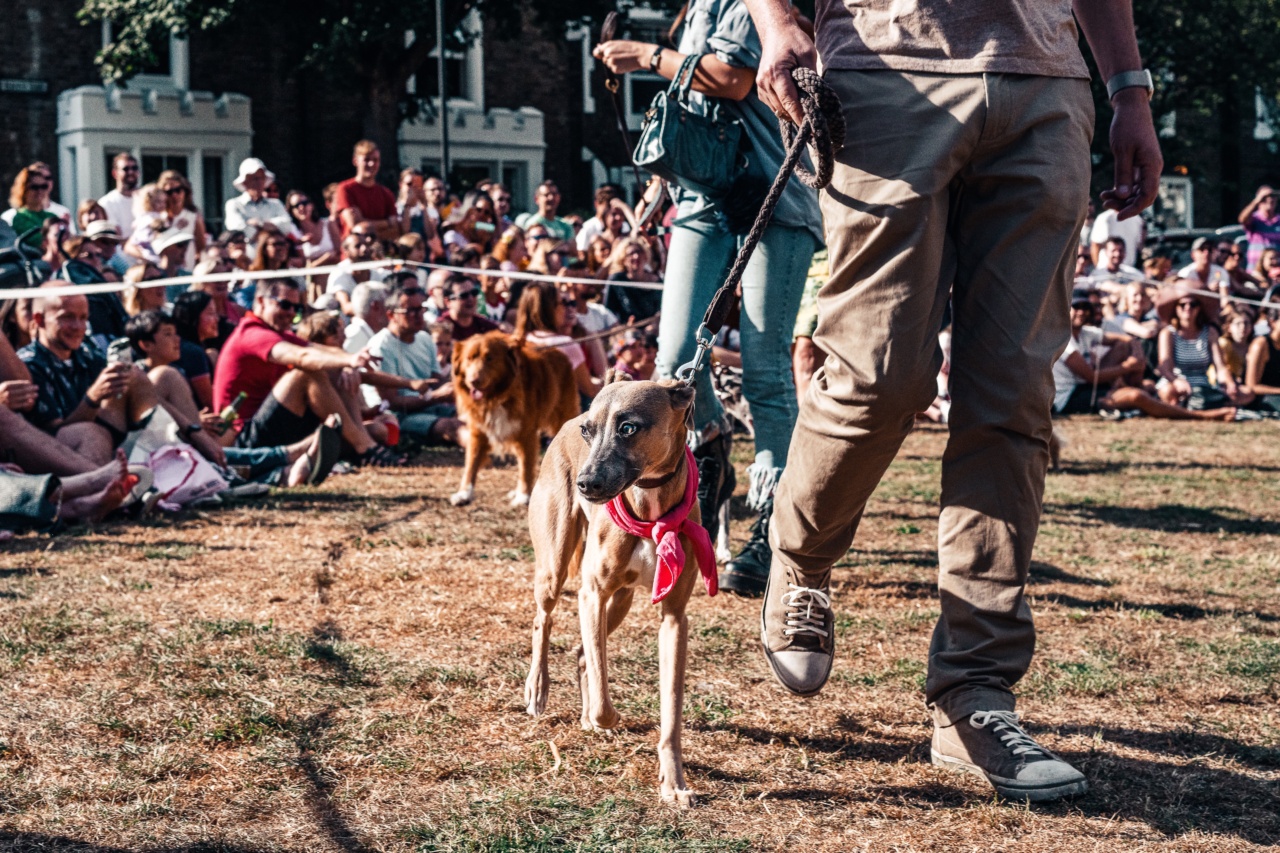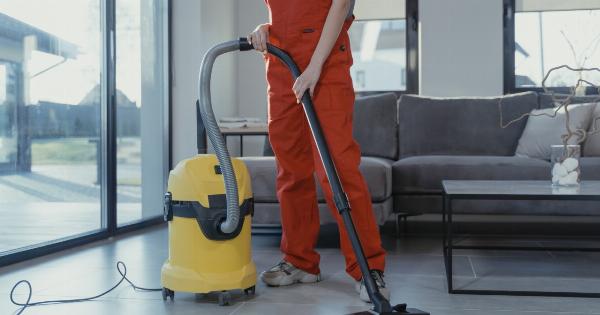Dogs, like humans, can experience fear and anxiety in various situations. Two common triggers for fear in dogs are vacuums and crowds.
The loud noise and sudden movements of a vacuum cleaner, as well as the overwhelming presence of a crowd, can be extremely stressful for our furry friends. If your dog gets anxious or scared around vacuums or in crowded environments, it’s important to take steps to reassure and comfort them.
In this article, we will discuss strategies to help your dog overcome their fear of vacuums and crowds, allowing them to feel safe and secure in these situations.
Understanding Your Dog’s Fear
Before we delve into the techniques to help your dog conquer their fear, it’s essential to understand why they react this way.
Dogs can develop fear and anxiety due to a variety of reasons, including traumatic experiences, lack of exposure during early socialization, or a predisposition to anxiety. By understanding the root cause of your dog’s fear, you can tailor your approach to address their specific needs.
1. Gradual Desensitization
One effective method to help your dog overcome their fear of vacuums and crowds is through gradual desensitization.
This technique involves exposing your dog to the trigger in a controlled and gradual manner, allowing them to become accustomed to it over time. For example, if your dog is scared of vacuums, start by placing the turned-off vacuum cleaner in a room where your dog spends time. Allow your dog to sniff and investigate the vacuum at their own pace without any pressure.
Gradually progress to turning on the vacuum for short periods while providing positive reinforcement, such as treats or praise, when your dog remains calm. Repeat this process gradually, increasing the duration and intensity of the vacuum noise, until your dog becomes desensitized to it.
2. Counterconditioning
Counterconditioning is another effective technique to help your dog feel more comfortable around vacuums and crowds. It involves pairing the trigger that scares your dog with something pleasant and enjoyable.
For instance, when vacuuming, you can offer your dog their favorite treats or engage them in a fun game to create positive associations with the vacuum. Similarly, in crowded situations, provide your dog with treats or toys they love to distract them and associate the crowd with something positive.
Over time, your dog will start to associate the trigger with positive experiences, reducing their fear and anxiety.
3. Create a Safe Space
Creating a safe space for your dog to retreat to when they feel scared is crucial. Designate a specific area in your home, such as a corner or a room, where your dog can go to when they feel overwhelmed.
Fill this space with comforting items, such as their bed, blankets, toys, and familiar scents. This safe space should be a quiet and low-stimulation environment where your dog feels secure. Encourage your dog to use this space whenever they are scared, and avoid forcing them out or overwhelming them further.
4. Avoid Reinforcing Fearful Behavior
While it’s natural to want to comfort your dog when they are scared, it’s essential to avoid reinforcing their fearful behavior.
Showering your dog with excessive attention or coddling them when they are scared may inadvertently reinforce their fear. Instead, stay calm and composed, providing a reassuring presence without excessively babying your dog.
Offering treats, praise, or engaging them in a favorite activity, but only when they are exhibiting calm behavior, can help redirect their focus and build confidence.
5. Seek Professional Help
If your dog’s fear of vacuums and crowds is severe or persists despite your best efforts, it may be beneficial to seek the assistance of a professional dog trainer or animal behaviorist.
These experts specialize in working with fearful and anxious dogs and can provide tailored guidance to address your dog’s specific needs. They may suggest additional techniques or recommend a behavior modification plan to help your dog overcome their fear.
6. Gradual Exposure to Crowded Environments
If your dog is scared of crowds, gradually exposing them to these environments can help them acclimate. Start with small and controlled situations, such as a quiet park or a gathering with a few known individuals.
Utilize positive reinforcement, rewarding your dog for calm behavior and providing a calming presence. Slowly progress to more crowded areas, ensuring your dog is comfortable at each stage before moving on to the next.
Patience and consistency are key during this process, as rushing can intensify your dog’s fear instead of helping them overcome it.
7. Provide Behavioral Supplements
In some cases, your dog may benefit from behavioral supplements that help reduce anxiety and promote relaxation. Natural supplements like chamomile, valerian root, or CBD oil can help alleviate stress and anxiety in dogs.
However, always consult with your veterinarian before introducing any new supplements to your dog’s routine to ensure they are safe, appropriate, and won’t interfere with any existing medications or health conditions.
8. Keep Vacuums and Crowds Predictable
Establishing routines and predictability around vacuums and crowd exposure can help your dog feel more secure. Set specific times for vacuuming or schedule outings to crowded places, so your dog knows what to expect.
Having a predictable routine helps dogs feel in control of their environment, reducing anxiety and fear that may arise from unexpected events. Consistency and regularity can go a long way in reassuring your dog.
9. Gradual Handling and Exposure to Noise
If your dog is particularly sensitive to noise, whether from a vacuum or crowds, gradually exposing them to different sounds and gentle handling can help them become desensitized.
Start by playing recorded vacuum noises or crowd sounds at a low volume while engaging in a positive activity with your dog, such as playing or training. Gradually increase the volume over time, always ensuring your dog remains calm and comfortable. Additionally, slowly introduce gentle handling techniques, such as brushing or touching their paws, while providing rewards and reassurance.
This gradual approach can help your dog build resilience and reduce their fear response.
10. Lead by Example
Lastly, as a dog owner, you play a fundamental role in shaping your dog’s behavior and emotional state. Dogs are highly perceptive and can pick up on your emotions and reactions.
If you show fear or anxiety when using the vacuum cleaner or in crowded environments, your dog is likely to mirror these emotions. Therefore, strive to remain calm and composed, displaying confidence and reassurance. Your dog will take cues from your behavior, and by leading by example, you can inspire them to feel more secure and less fearful.
Conclusion
Fear of vacuums and crowds can be distressing for both dogs and their owners. However, with patience, understanding, and the right techniques, you can help your furry friend overcome these fears and find comfort in previously scary situations.
Remember to proceed gradually, tailor your approach to your dog’s individual needs, and reinforce positive behaviors. By implementing the strategies discussed in this article and seeking professional help when necessary, you can reassure your dog and help them live a happier, fear-free life.






























